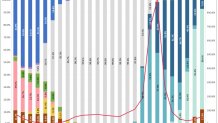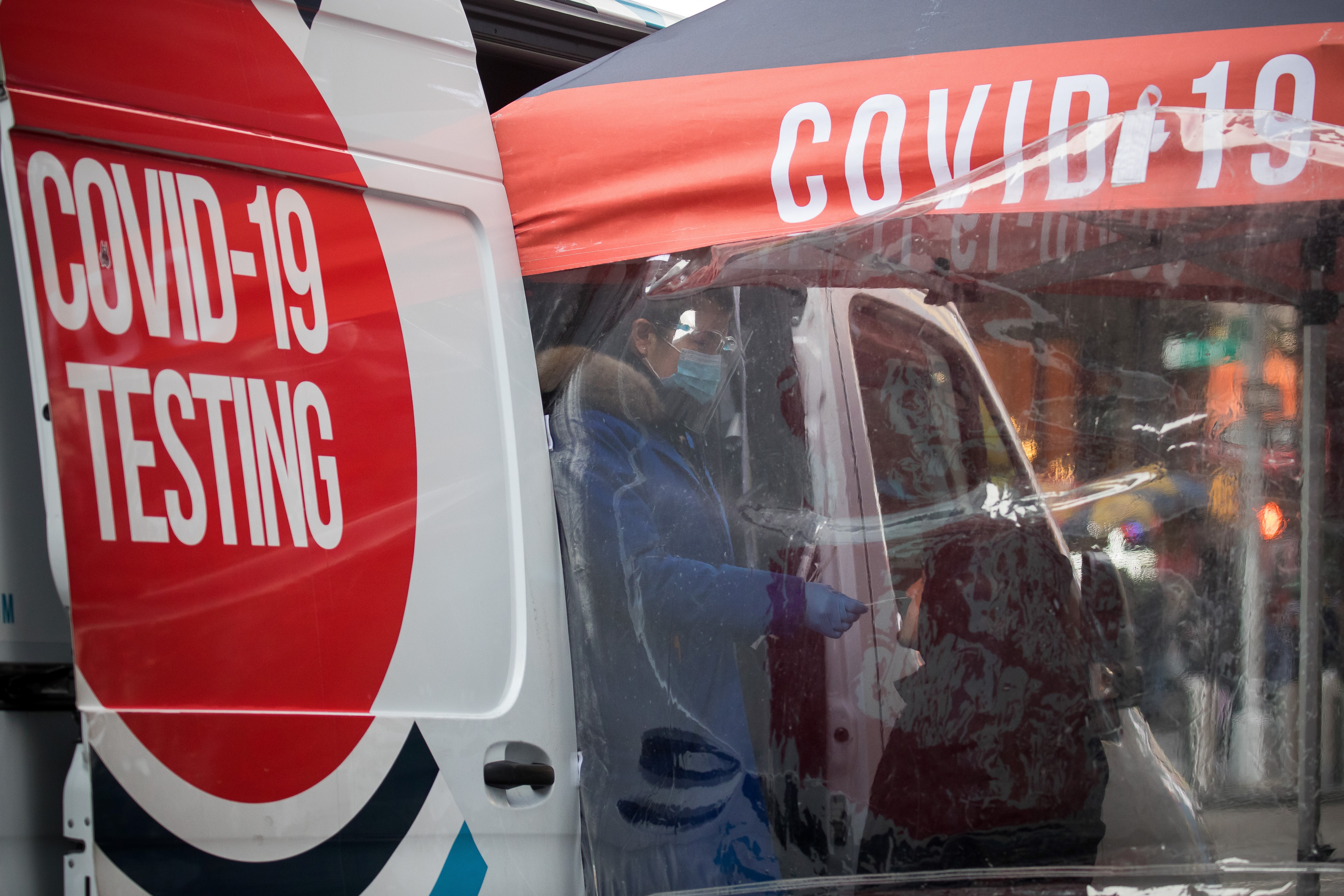That didn't take long.
One of the two omicron subvariants of the highly transmissible BA.2 COVID strain believed to be fueling "significant community spread" in parts of New York is now the dominant COVID variant in the CDC region that includes the Empire State, an all-too-familiar shaking up at the top that has some feeling a sad sense of deja vu.
According to CDC data updated Tuesday night, subvariant BA.2.12.1 now accounts for an estimated 52.3% of all virus circulating in the New York region, which for the agency's purposes also includes New Jersey, Puerto Rico and the Virgin Islands.
That's up from an estimated prevalence around 21% two weeks ago and 12% the week before that, illustrating once again the rapid, albeit expected, pace at which the main omicron variant and its subvariants have usurped New York and the U.S.
By comparison, BA.2.12.1 accounts for about 19% of estimated COVID cases in the U.S. right now, the CDC says, a sharply lower spread rate than the one seen in the Northeast. Three weeks ago, that national number was 3.3%, the CDC says.

Get Tri-state area news delivered to your inbox. Sign up for NBC New York's News Headlines newsletter.
While no scientific evidence exists at this point to link BA.2.12.1 or BA.2.12, the other omicron subvariant under close scrutiny at the moment, to more severe COVID outcomes or lower vaccine effectiveness, health officials say early data indicates the first subvariant could be the most contagious coronavirus strain yet.
Early findings indicate that subvariants could be up to 27% higher than BA.2, which was said to be up to 60% more contagious than the original omicron strain that overtook the globe, leading to unprecedented case rates earlier this year.
Now well more than two full years into the pandemic, officials aren't hesitating to urge people to take enhanced precautions whether they're vaccinated or not, even as they insist they are not sounding any public health alarms anew.
New York health officials raised a fresh flag last week when they acknowledged the higher-than-national rate of emergence of the subvariants in certain counties in the Central and Western regions and said they believed BA.2.12.1 was to blame.

For the month of March, BA.2.12 and BA.2.12.1 rose to collectively comprise more than 70% prevalence in Central New York and more than 20% prevalence in the neighboring Finger Lakes region, the state said last week.
Data for April indicate that levels in Central New York topped 90% as of the state's last update, evidence it says shows the region is facing the most extensive subvariant-linked community spread in the U.S. No regional update similar to the variant advisory issued for the two New York counties last week has come since.
Of 14 U.S. counties identified by the CDC as being high risk in terms of COVID community-level threat, 10 of them are in New York, though based on the federal agency's latest map, it appears the Central New York issues have expanded.
At least half of all counties in the North Country are in that high-risk zone, which still includes much of Central New York, some of the Finger Lakes and now also expands into the Southern Tier. Learn more here.
More Coverage
As of Wednesday, Central New York owns the highest rolling positivity and case rates per 100,000 residents of all 10 New York regions, and it's not even close. The rolling case rate for the region that includes Cayuga, Cortland, Madison, Onondaga and Oswego counties has a 13.2% rolling positivity rate, well above the next closest Western, 12.3%) and dwarfing the rolling rate in New York City (3.4%).
The difference in cases per 100,000 is even starker. Central New York ranks first on a rolling basis (52.9 new cases per 100K over a seven-day average), nearly double the statewide average (30.7) and New York City's below-state average of 27.3.
State reinfection data also puts Central New York's reinfection rate (6 per 100K) at a substantially higher level than the state's other regions. That rate compares with a statewide rolling average of 2.6 new reinfections per 100,000 residents and one of 2.2 per 100,000 residents in New York City.
For now, hospitalizations, the more critical benchmark from a public health perspective, remain manageable, but they are beginning to climb. Statewide COVID hospitalizations in New York stand at 1,404, a 56% increase in the last month, though health department data shows more than half of New York COVID patients who were hospitalized were admitted for reasons other than the respiratory virus.
Central New York's hospitalization rate per 100,000 (12.07) is also up over last week and well above the statewide average (5.95) and the city's (4.2).



